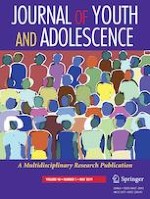07-01-2019 | Empirical Research
Peer Victimization, Mood Symptoms, and Alcohol Use: Examining Effects among Diverse High School Youth
Gepubliceerd in: Journal of Youth and Adolescence | Uitgave 5/2019
Log in om toegang te krijgenAbstract
Peer victimization is associated with alcohol use among adolescents. However, few studies have examined the mediating role of depression and anxiety, or differences by race. The current study examined the prospective relationship of peer victimization, depressive and anxiety symptoms, and alcohol use across two timeframes: 9th to 11th grade and 10th to 12th grade among African American and White youth. Two thousand two hundred and two high school youth (57.6% female) who identified as either African American (n = 342, 15.2%) or White (n = 1860, 82.6%) provided data on study variables. Path analysis among the overall sample indicated that anxiety symptoms was a significant mediator for both timeframes, with depressive symptoms mediating the pathway during the 10th to 12th grade timeframe. The findings were most consistent among White youth, with no significant indirect effects observed for African American youth. Thus, addressing depressive and anxiety symptoms may be effective targets to decrease alcohol use risk as a result of peer victimization among White youth. However, further research is needed to better understand risk models for peer victimization exposure on substance use outcomes among racial/ethnic minority youth.
